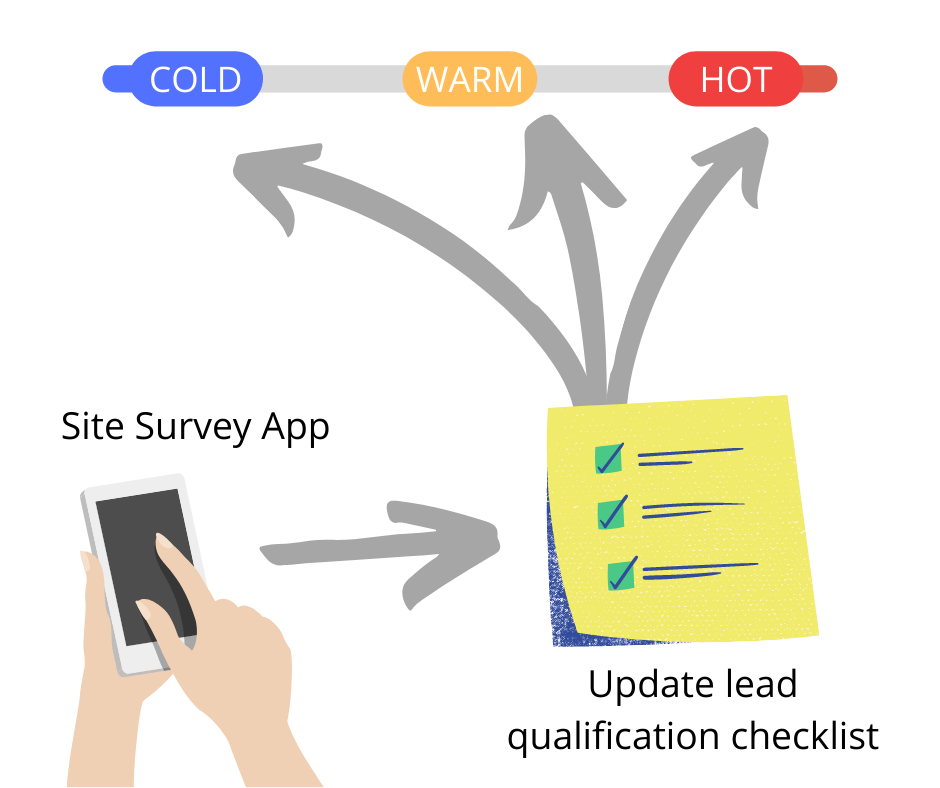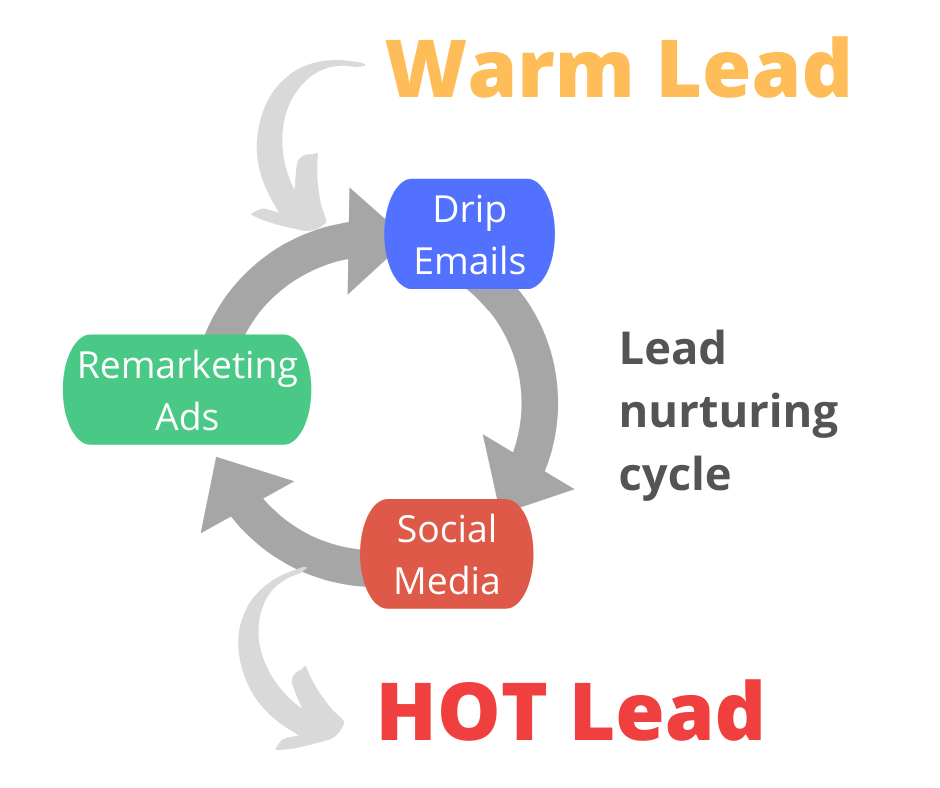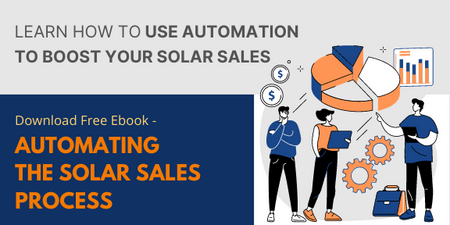In a competitive business like Solar EPC, lowering your customer acquisition costs is a key factor to achieve profitability. From that perspective, generation and management of leads is of great importance for a solar PV installation business.
Table of content
1. Lead generation
2. Solar lead management
2.1 Lead management plan
2.2 Qualify your leads
2.3 Warm up your leads
2.4 Lead scoring workflow
2.5 Measure, learn and improve
2.6 Use automation for lead management
Lead generation
Here are a few practically effective lead generation channels for solar installation sales.
Email Marketing
Very useful for B2B solar lead generation; in case of B2C it will help your brand awareness and online following. You can create targeted email campaigns for reaching out to potential solar clients. Use these email templates for solar specific email marketing campaigns.
Yellow pages and business listings
Platforms like Google Maps, Google My Business make it easier for prospects to find you and contact you. List your business in local yellow pages or trade portals like Indiamart or JustDial etc.
Ranking on these listings will automatically gain you many clients. However, make sure to manage these platforms well.
As most people check online reviews nowadays before making a major decision, bad reviews can damage your company’s reputation.
So, consider addressing each comment on time. Be thankful to the ones complimenting you. If there are any negative reviews, be sure you handle them in a humble way and resolve their problem quickly.
Social media promotions
Use LinkedIn, Facebook, and YouTube pages/channels to build organic reach for your brand. Over time, this becomes a very cost-effective channel to reach your potential customers.
You may find residential clients on Facebook while your commercial clients will be Linked In. Once, you know which type of audience is where you can create posts accordingly and post them.
However, remember to be consistent with your efforts.
Online ads
Use Google and Facebook ads if you are into B2C solar installation business. LinkedIn ads are more effective for B2B lead generation.
Target the potential customers in your area with geotargeting options. Use specific keywords like “solar companies near me” or “solar companies in (your location name). This will enable you to boost your sales drastically as you will be targeting only those who have a buyer intention.
You can also retarget the leads who didn’t convert in the first go and drive maximum conversion.
Content marketing, SEO
This is arguably the most cost effective lead generation channel in the long run. But initially, you need to invest a lot of time and have patience.
Create high-quality content such as blog posts, articles, and infographics that provide valuable information about solar energy. Also, address common questions and concerns of potential customers.
Optimize your content as well as your website with relevant keywords, meta tags, and other SEO best practices to improve your website’s visibility on search engines and attract organic traffic.
Offline lead generation
Trade shows and partnerships with local contractors will help you with offline lead generation for solar projects. Set up a booth, showcase your products and services, and engage with potential customers face-to-face. Additionally, establish partnerships with local contractors or other businesses that complement your solar installation services. This can lead to referrals and mutually beneficial collaborations that generate leads for your business.
Sales in a solar installation business are a product of lead generation and effective lead management. Now let’s take a look at how efficient lead management can actually help you to grow the sales of your solar business.
Solar lead management
When you want to grow your solar installation business, simply investing in lead generation is not enough. You should also ensure that those leads are effectively managed and converted to paying customers.
These lead management tips will help you with that –
Lead management plan
Even before you make any investment in SEO, social media or online ads for solar lead generation, you need to have a well-thought-out plan about how you are going to manage those leads.
In case of solar lead management, you need to answer the following questions –
- Who is the target customer, how much budget he is likely to have?
- Based on the average ticket size, how long will the average sales cycle be?
- How many meetings will be needed on average, before getting an order?
- Based on the average sales cycle and number of meetings, how many sales people will be needed? How skilled / qualified / experienced should they be?
- How to screen useful leads, so as to not waste much time of sales people?
- What channels to use for lead screening, engagement, nurturing, follow ups etc?
Before you start spending marketing dollars to acquire new leads, you need to be absolutely sure that you are ready to convert those leads to sales. Because all of those leads will have a very limited time window for conversion. If you fail to convert in that short window of time, your marketing spend will be wasted.
Qualify your leads
This is a very important part of the lead management process. Your sales and marketing team has limited time on their hand. You would want most of their time to be spent with leads who are serious and not just curious.
Therefore you need to screen your leads in the beginning and then engage with only those leads who have shown a purchase intention in the next 1-2 months.
Ask them about –
- How much budget they have provisioned for this solar project.
- If they have thought about what installation capacity they need.
- If they have allocated an area for the installation.

Even if they don’t have exact answers to these questions, the way they answer will still tell you if they have given a serious thought to these questions.
Warm up your leads
Based on your screening process, you can decide how serious is the buying intent and urgency for each of your leads.
The ‘red hot’ leads who are ready to buy can be straight away handed over to the sales people for – site survey, preliminary engineering and proposal.
But there would be many other leads, who are not quite as ready to buy. They still need some more information, some more time to think. These are ‘lukewarm’ leads need to be nurtured and taken to the ‘red hot’ stage before sales people can start talking to them.
Use the following lead nurturing methods to educate and convince your potential customers about the value and benefits of solar PV installation –
- Add them to your weekly / monthly email newsletter. Send them customer case studies, recent project news, testimonials from happy customers.
- Invite them to join your social media pages, YouTube channel.
- If they visit your website a few times in a week, use Google / Facebook remarketing ads to nudge them over the edge and make the buying decision.
- Whenever they interact with either your sales team or your website, make it a point to note down their questions. Then you can send them relevant marketing material to help them overcome their doubts or reservations.

Each new lead comes at a cost. While your sales team should only focus on the serious ‘HOT’ leads, you don’t need to ignore the remaining ones. They just need a little warming up to bring them to the ‘HOT’ stage where they are ready to buy from you.
Lead scoring workflow
By now we know all leads are not the same. Each of them is at a different stage in the buying process. The colder or warm leads need more time and nurturing before they are ready to buy. Whereas the hot lead deserve most of the attention of your sales team.
It then becomes clear that we need an effective system to score each lead, to determine whether they are COLD, WARM or HOT.
It is recommended to create a workflow for regularly scoring your leads on the most recent interactions like – phone conversation, website visit, reply to email etc.
Your sales and marketing teams are going to jointly work on the lead scoring and subsequent lead management. That’s why they need to be on the same page with this lead scoring system.
How effectively you score your leads will directly influence how your sales team responds to them and how effectively they can convert them to sales.
Measure, learn and improve
No matter how effective or efficient you think your sales process is, there is always going to be some room for improvement.
So your goal should always be to measure the performance of your solar sales funnel, for different types of leads. Use the data to analyze the gaps and opportunities for improvement.
Then make the necessary changes to your lead management process, keeping your sales and marketing teams in the loop.
Then measure, analyze and repeat again.
Even incremental improvements to your lead management process will compound over time to make your solar sales process substantially more effective and your solar business more competitive over time.
Use automation for lead management
When your lead generation, nurturing, sales and marketing processes are decently stabilized, you can use automation to make them even more productive.
Automation will help you to reduce manual efforts of your sales team, allowing them to spend more time with customers. Automated workflows will also ensure that all procedures are followed 100% of the time – making it easier to implement lead management processes.
Here are some examples of automation for solar lead management –
1. Add a ‘customer readiness checklist’ to your solar site survey app. Ask questions about budget provision etc. to gauge the readiness of the customer. Connect the site survey form directly to your solar CRM software where the lead can be assigned a score based on his answers.
2. When you have a bunch of cold leads, use a email automation workflow to send them a series of emails based on their current lead score, their past questions and their recent interactions with the sales team or your website. Use mail merge automation to personalize your drip emails.
This personalization will improve the overall engagement with your email campaigns.
3. Use a standardized solar project proposal template to automate the proposal creation process. An automation workflow to can make your work considerably simpler by inserting the customer details, engineering data and commercials from your solar CRM into the standard proposal template. Add some more automation to this process by using a standardized proposal email template, to quickly share proposals with your customers.
4. If you use emails, spreadsheets and folders to manage the sales and marketing related data, connect all of these tools with a workflow to measure sales related activities. Over time, you can use this data to analyze the productivity and improve your lead management process. Solar CRM offers many such automation workflows to improve your sales and marketing processes.
5. Whenever you get new leads clearly delegate them to your sales reps. Then help them to take timely actions (follow up, visits, site surveys etc.) by sending them daily, personalized “Todo List” emails.


